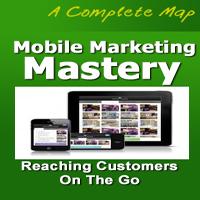


The Power Of Flexible Work Models

In today's rapidly changing world, traditional employment structures are evolving to accommodate the demands of a dynamic global economy. Flexible work models are gaining prominence, offering a versatile and adaptive approach to work that can benefit both employers and employees. In this article, we'll explore the concept of flexible work models and their significance in the modern workforce.
Flexible work models refer to arrangements that allow employees to have more control over when, where, and how they work. These models provide an alternative to the traditional 9-to-5 office job and can come in various forms. Here are some key aspects and benefits of flexible work models:
Diverse Work Arrangements: Flexible work models encompass a range of options, including remote work, part-time schedules, compressed workweeks, job sharing, and freelance or gig work. This diversity allows individuals to choose the arrangement that best suits their lifestyle and needs.
Improved Work-Life Balance: Flexible work models enable employees to better balance their personal and professional lives. Remote work, for example, eliminates commuting time and allows for greater flexibility in managing family responsibilities.
Increased Productivity: Many employees find that they are more productive when they have the freedom to work during their peak hours or in a location that suits them. This can lead to enhanced job satisfaction and performance.
Access To A Wider Talent Pool: Employers embracing flexible work models can tap into a broader pool of talent. They are not limited to hiring only local candidates but can access skilled individuals from around the world.
Cost Savings: For both employees and employers, flexible work models can lead to cost savings. Reduced commuting costs, office space expenses, and increased job satisfaction can positively impact the bottom line.
Adaptability To Changing Circumstances: Flexible work models provide resilience in the face of unforeseen events, such as the COVID-19 pandemic. Remote work and flexible schedules allow businesses to adapt quickly to unexpected disruptions.
Sustainability: Reduced commuting and office space usage can have positive environmental impacts, making flexible work models a sustainable choice for both individuals and companies.
It's important to note that flexible work models aren't suitable for every industry or job role. Some positions require a physical presence or specific equipment that can't be replicated remotely. However, in sectors where it is feasible, such as technology, marketing, and customer service, the benefits are clear.
One prominent example of a flexible work model is the "hybrid work" approach, where employees split their time between the office and remote work. This approach gives employees a taste of both the collaborative atmosphere of the workplace and the independence of working from home. It provides a balance that suits many.
Flexible work models are reshaping the world of employment, offering a new way of working that aligns with the diverse needs and expectations of the modern workforce. As technology advances and the demand for work-life balance grows, flexible work models are likely to become even more prevalent. Companies that embrace these models stand to benefit from increased productivity, access to top talent, and the ability to navigate unforeseen challenges with ease. For employees, flexible work models offer an opportunity to unlock a better work-life balance and greater job satisfaction, making them a significant force in the future of work.






 2. Knowledge Acquisition: One of the primary purposes of a comprehensive guide is knowledge acquisition. It allows individuals to delve deep into a subject matter, gaining a comprehensive understanding that may not be possible through shorter articles or videos. Comprehensive guides provide the opportunity to become an expert in a specific domain.
2. Knowledge Acquisition: One of the primary purposes of a comprehensive guide is knowledge acquisition. It allows individuals to delve deep into a subject matter, gaining a comprehensive understanding that may not be possible through shorter articles or videos. Comprehensive guides provide the opportunity to become an expert in a specific domain.
3. Skill Development: For individuals looking to acquire new skills, comprehensive guides offer step-by-step instructions and practical tips.
Strategies For Success
 4. Optimize Load Times
4. Optimize Load Times
Mobile users expect fast-loading pages. Slow-loading websites can deter potential customers. Optimize your website's load times by compressing images, minimizing code, and leveraging content delivery networks (CDNs) to ensure swift and efficient delivery of content to mobile devices.
5. Leverage Mobile-App Deep Linking
If your business has a mobile app, utilize deep linking. Deep links direct users to a specific page or section within your app, which can enhance the user experience and streamline the conversion process. This is especially effective for e-commerce apps and content-driven apps.
6. Implement Social Proof
Leverage social proof, such as customer reviews, ratings, and testimonials, to build trust and credibility with mobile users. Positive feedback and recommendations from others can reassure potential customers and increase their likelihood of converting.
7. Mobile Payment Options
Offer multiple mobile payment options to simplify the checkout process. Mobile wallets like Apple Pay and Google Pay, as well as options for credit card scanning, can expedite the payment process and reduce friction.
8. A/B Testing
A/B testing involves comparing different variations of a page or element to determine which one performs better in terms of conversion. Experiment with different layouts, content, and designs to continuously optimize your mobile conversion rates.
 Identifying Niche Market Potential
Identifying Niche Market Potential
The first step in capitalizing on niche market potential is to identify these opportunities. Research is key. Analyze consumer behavior, market trends, and competition to discover gaps or underserved areas within your industry. These gaps often indicate areas where niche markets can be found. Conduct surveys, gather feedback, and use data analytics to pinpoint specific consumer needs that aren't met by mass-market solutions.
Tailoring Your Product Or Service
Once you've identified a niche market, the next step is to tailor your product or service to cater to their specific needs. Adapt your marketing strategy, messaging, and product features to resonate with this unique audience. By customizing your offerings, you'll not only meet their expectations but also establish a strong connection with the niche audience, building brand loyalty.
Effective Marketing And Communication
Reaching your niche market effectively requires a tailored marketing approach. Create content and advertising campaigns that directly address the pain points and desires of this audience. Use the channels and platforms where they are most active, whether it's social media, niche forums, or specialized publications. Craft your messaging to speak directly to their interests, demonstrating that you understand their unique needs.
Building Relationships
Nurturing relationships with your niche market is a critical aspect of capitalizing on its potential. Engage with your customers regularly, seeking feedback, and making improvements based on their suggestions. By showing a commitment to serving their needs, you can build a community of loyal customers who not only purchase your product but also become brand advocates.






Unveiling A Path To Earnings And Collaboration
 Why Affiliate Marketing Matters
Why Affiliate Marketing Matters
Low Entry Barriers: One of the most appealing aspects of affiliate marketing is its accessibility. You don't need a substantial upfront investment, and it's open to individuals of all experience levels. Whether you're a seasoned marketer or a complete novice, you can venture into affiliate marketing.
Flexibility: Affiliates have the freedom to choose the products or services they want to promote. This flexibility allows you to align your marketing efforts with your interests, ensuring a genuine and passionate approach to promoting products.
Passive Income Potential: Affiliate marketing offers the promise of passive income. Once you've set up your affiliate campaigns and your marketing materials are live, you can continue to earn commissions passively. In other words, you can make money even when you're not actively working.
No Inventory Or Customer Support: Unlike traditional businesses, affiliates don't need to worry about inventory management or customer support. Those aspects are the responsibility of the business you're promoting. Your primary focus is on driving traffic and making conversions.
Exploring Diverse Affiliate Opportunities
Affiliate marketing encompasses a wide range of products and services, offering something for virtually every niche or interest. Common affiliate opportunities include:
Physical Products: Affiliates can promote physical products, from electronics and fashion to home decor and health supplements.
A Roadmap To Success
 2. Building And Nurturing An Audience
2. Building And Nurturing An Audience
One of the core challenges of affiliate marketing is building and nurturing an engaged audience. Success often hinges on having a dedicated following, which takes time and consistent effort. Affiliates must provide valuable content, maintain transparency, and build trust with their audience.
3. Content Quality
High-quality content is essential for attracting and retaining an audience. Producing compelling and relevant content that resonates with your target market is a challenge that affiliate marketers face. Striking a balance between informative and promotional content can be tricky, but it's crucial for long-term success.
4. Compliance And Regulations
Affiliate marketers must navigate advertising and affiliate marketing regulations, which can vary by region and platform. It's essential to stay compliant with these rules to avoid legal issues. Disclosure of affiliate relationships and transparency is particularly important to meet compliance requirements.
5. Attribution Challenges
Tracking the source of conversions and correctly attributing them to the appropriate affiliate can be complex. Marketers need robust tracking systems to ensure accurate commission payments. Solving attribution challenges often involves advanced analytics and attribution modeling.